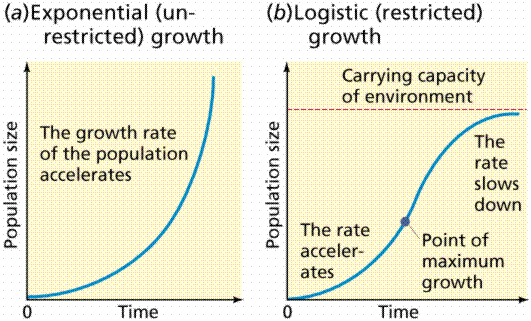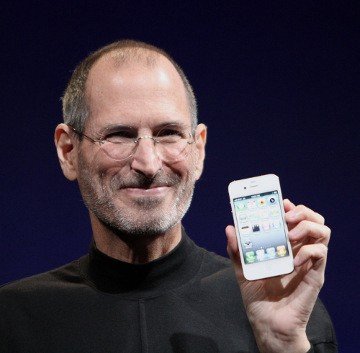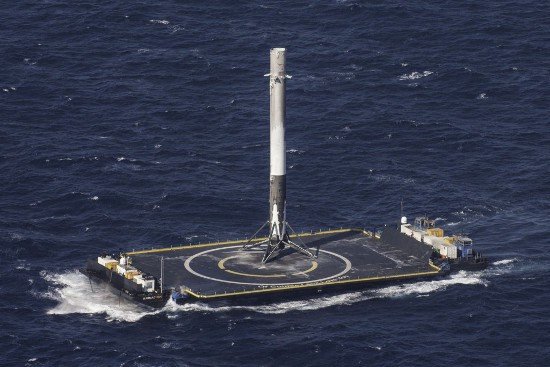Why Your J Curve is Actually an S Curve and TAM is a Meaningless Metric
A few days ago I had the privilege of moderating a roundtable with some of the smartest futurists and forward thinkers in the industry. Our panelists included Tim O'Reilly, James Allworth, Ben Gilbert and Jeff Morris Jr.
It was an interesting experience. They say you are the average of the 5 people in your life and these four certainly padded my total — and informed my perspective on the future.
There was one point in particular that Tim made on the nature of disruption and innovation. During the panel I pushed back some, with time however this truth becomes more and more apparent.
Tim rightly pointed out, there is no such thing as a J curve. Sure short term graphs show up and to the right, but eventually everything levels out.
There are only so many billions of potential consumers, pushing beyond that is impossible.
And technology naturally plateaus. Moore’s Law is pushing its physical limitation already (at least in terms of economic feasibility), and many other technologies have displayed similar trends.
But with every new plateau the new normal shifts further and further.
“If I have seen far, it is because I stood on the shoulders of giants.” — Isaac Newton
The interesting intersections
Technological innovation is interesting. Ultimately however, each innovation can only go so far. The most intriguing areas are found on the fringes, where multiple innovations meet.
Today genetic sequencing is hot. But scientists have been studying the human genome for years. The intersection with AI and machine learning is particularly interesting because DNA is so vast. No human could ever understand or analyze DNA.
Instead geneticists employ basic ML (machine learning) to find and analyze relevant genome sequences. Using data, companies like 23andMe can then accurately pattern match to known research and provide personalized conclusions: “you may have a 15% higher risk of heart disease”
And in genetics we are still in the early innings. But with advances in gene therapies, medicine delivery, 3D printing, artificial intelligence and robotics, is a future of cyborgs really so far off?
I would argue no. And as innovation is generally additive/transformational, this implies our S curve actually continues upward — in a lumpy, stepwise manner.
Use your imagination, I can’t draw
Hockey sticks can hurt though
There is a potential problem with conventional venture analysis. As a rule, any graph with up and to the right growth gets investors excited.
But this only paints a small portion of the picture. Yes, founders found product-market fit but that isn’t always enough. What about the market?
Actual total addressable market (ATAM)
Investors always ask about the TAM (total addressable market). In general this is helpful, but not as much as you would think.
The best startups are reinventing the world and creating new markets. If Uber’s addressable market was just the market for taxis/black cars, Benchmark wouldn’t be suing them.
https://thesyndicate.vc/uber-going-0-benchmark-knows/
Instead this innovative “taxi” company redefined transportation and is destroying car ownership globally.
They MASSIVELY exceeded original expectations.
But this is generally not the case. In businesses where startups look to take on incumbents, it is often about stealing market share. In these scenarios TAM is largely unchanged. Great businesses can still be built in this manner, but the upside is capped (as opposed to almost unlimited). So the question VCs NEED to ask is: is the ATAM greater than or less than the TAM.
This comes down to foreseeing market creation, which most individuals can’t do. A better question may be, is the TAM realistic? And how large can it be.
What happens if everything goes right?
The problem with J curves is you never know when they slow into an S curve. Having an understanding of the ceiling and time horizon is key to creating outsized returns, both for investors and entrepreneurs.
And this comes down to understanding the market, your place in it and the founders vision for the future. Founders that don’t shoot for the moon rarely reach the stars (Travis being an exception).
Understanding time horizons
Technologists are inherently optimistic (at least on time horizons), especially when it comes to their own fields. Few dedicate their lives to something they don’t believe they will live to see.
Hope powers our ability to work. We need a driving force and merge that with our views of reality. Of course artificial general intelligence is right around the corner, driverless cars will be everywhere by 2020, a colony on Mars by 2031… optimists are understandably optimistic.
Unfortunately with tech and with humanity, things take longer — people do not change quickly. And more importantly, tech always takes twice as long and costs twice as much.
“We tend to overestimate the effect of a technology in the short run and underestimate the effect in the long run.” — Roy Amara — Amara’s Law
“Using a database of 95 AI timeline predictions show: expert predictions contradict each other considerably,and are indistinguishable from non-expert predictions and past failed predictions. Predictions that AI lie 15 to 25 years in the future are the most common, from experts and non-experts alike.” — Semantic Scholar, How We’re Predicting AI — or Failing To
Venture timelines
Venture capital funds typically run for 10 years, with an option for two more if necessary. Because VCs raise money from LPs (limited partners), LPs hold VCs accountable to drive returns. And that means exits and liquidity, to pay back LPs.
This means VCs can’t really invest in startups with longer time horizons — so truly futurist tech and research is rarely funded.
This creates situations where startups are incentivized to “over-promise” on speed to market. If you are building the future and a investor says “that’s too slow,” you say you can do it faster. Whether or not that is true, most fanatical founders say what is necessary to get funding.
This creates challenges between investors and operators on the vision of the future. The founder wants to change the world but their investors prefer an exit with big returns.
Exiting a company
It is better to go out on a high note. Companies in the exponential growth phase of the S curve are the most highly valued. Investors and markets can’t cap them because the growth is taking off. “It could keep going forever, right?” or at least that is the subconscious thought.
Whether it is an acquisition or IPO, people respond best to a rocketship and will overpay to be part of the upside.
The same isn’t true in a plateau. Instead that means the company may have peaked and the multiples are likely much lower.
This understandably creates an interesting dilemma for founders and investors. To get the best offer or valuation in public markets, you want to be as close to the flattening of the S curve as possible (without slowing growth). Sell too early and you leave money on the table, sell too late and your valuation drops.
It is always better to sell a vision of the future — look at Bezos. Amazon makes no money but the stock is on a constant climb upward. Investors realize Amazon’s future potential and are betting big on that (for more on how Amazon is killing ecommerce, see this post).
https://thesyndicate.vc/the-amazon-apocalypse-of-ecommerce/
If Amazon’s growth sputtered, that would be a different story.
Look at Rome. Rome’s economy was built on unsustainable wars. Roman armies looted cities and built massive wealth, to cover their massive debts. Eventually the debts outpaced the treasure and the empire weakened, corrupted and finally fell (sounds a bit like the US right? :)
[LIKE THIS ARTICLE SO FAR? THEN YOU’LL REALLY WANT TO SIGN UP FOR MY NEWSLETTER OVER HERE — AND GET SOME FREE BONUSES!] - http://thesyndicate.vc/subscribe
Timing is everything
Facebook wasn’t the first social network. Google wasn’t the first search engine. The iPod wasn’t the first MP3 player.
More important even than the founding team, is the timing. Try selling to a market before it is ready — the results are dismal.
Do you remember WebTV? Probably not. They were Netflix or Roku in the 1990s, bringing internet right to your television. It turns out the world wasn’t ready for cable cutting.
It hurts, but it happens. Much more frequently than you’d expect. Ideas are worthless, timing and execution is everything.
Startups can do everything right but being too early or too late often equates to failure.
And for disruptive technologies at the intersections of innovation, this becomes even more important. The robotics to build iRobot-esque bionic arms are nearly ready, the brain-body interface is another story.
Babies are a great metaphor here. Some are active and engaged early, but their bodies don’t quite do what their brains want. They try and try and try, until they give up — screaming and crying because the toy is just out of reach. As parents, we think we can predict first steps, first smiles, the first words… anything. But, it is entirely variable. Despite seeing progress day in and day out, one day it just happens — a breakthrough. Technology is a lot like that. The big jumps make big differences.
And predicting these breakthroughs is impossible. But playing in the right areas isn’t.
Remember nanotechnology? As a graduate of Georgia Tech, I heard the hype. Nano was going to transform the world, revolutionize manufacturing and put Atlanta on the map… that was almost 9 years ago. Not much has changed. The hype has not lived up to expectations, at least to date.
Understanding true trends
As technologists, we consider ourselves educated and less likely to fall victim to hype cycles and fads. The truth is, this is anything but true.
Party rounds and buzzwords are as prevalent in venture as any other industry, if not more so. Investors suffer FOMO (fear of missing out) and “need” to be in on each of the big trends — leading to inflated valuations.
For an industry focused on ROI and earned carry, this seems odd. Double the valuation and effectively double your dilution. Or double your investment and have 50% fewer portfolio companies. While startup investing is all about outside returns and one or two typically return the fund, continually overstretching can have consequences — doing so from FOMO just amplifies this.
Great investors, and founders
I wanted to outline the attributes of great investors here. Unfortunately it isn’t that easy. Most great investors are constantly learning and listening to those around them. They have views on the world and where it is going, but with sufficient foresight to understand they can’t see it all. They take and even embrace risk — all while carefully weighing costs against upside rewards.
And perhaps most importantly, they know when to say no.
And better yet, they know when to break their rules and invest anyway.
That is what makes a great investor. Given sufficient time and money, these investors’ scorecards almost always come out on top.
But fear of missing out is a real thing — great entrepreneurs (and salesmen) can engineer it. The founder distortion field is powerful, they pull you into their vision of the future.
Founders with this skillset are often successful. Entrepreneurship is almost all about taking risks and uniting a team around your shared mission. Founders that can do this easily raise money and recruit top talent.
The more dangerous reality distortions are that of your own mind. We think we control our brains, but that could not be further from the truth. We feel hungry after sniffing something tasty, wired after a few cups of coffee, tired when someone else yawns….
I bet Obama just made you stifle a yawn…
The truth is there are many biological triggers that controls our inner emotions and thoughts. Understanding these impulses leads to better investments.
Loss aversion and FOMO
“In economics and decision theory, loss aversion refers to people’s tendency to prefer avoiding losses to acquiring equivalent gains: it’s better to not lose $5 than to find $5. This is also the implication of risk aversion. What distinguishes loss aversion is that the utility of a monetary payoff depends on what was previously experienced or was expected to happen. Some studies have suggested that losses are twice as powerful, psychologically, as gains.” — Wikipedia
On the surface this appears to contradict investor FOMO. Unpacking it however unveils something else entirely.
VCs have NOTHING to lose and EVERYTHING to gain. VCs invest others money on 2/20–2% management fees per year plus 20% of carry.
They get their 2% per year, regardless of results. They cannot lose. But rather than loss aversion with respect to investment (the money isn’t theirs anyways), the only loss is the potential upside.
Inverting loss aversion theory leads to VC FOMO. The only loss venture capitalists can suffer is missing out on carry — 20% of the net difference in the fund.
So if a VC plays things safe and invests a $100M fund and returns $120M, the VCs split 20% of the 20M difference, or $4M.
If however they had invested in riskier startups with greater upside and returned $500M, the 20% of 400M is $40M (10x as much).
It is easy to see how investment structures favor GO BIG OR GO HOME. And as such, every investor subconsciously suffers from fear of missing the next Uber, Google, or Facebook.
(Don’t believe me? Look at Benchmark, suing Uber for fear of it going to 0).
Bigger than money
Here is where we need a “with great power, comes great responsibility” cliche quote.
In all seriousness however, longer term thinking generally comes after success (if at all). Once initial missions are complete and sufficient personal wealth created, the best among us look to more forward thinking, philanthropic ventures.
Bill Gates fighting malaria and HIV, Peter Diamandis’ X prize, Elon focused on… well on being Elon. Money allows individuals to dream bigger, beyond a 10 year fund cycle.
As we said previously, the most promising and impactful technology is often at the fringes, taking time to mature. And big problems require ambitious solutions that merge technologies and expertise from a variety of industries.
The question is: can only the ultra-wealthy afford to change the world?
In America the government has surely failed. And many others around the world are similarly inept.
Private enterprises have long pushed the envelope on technology, innovation, and civilization. But thanks to the capital markets of today, much greater focus is being placed on short term returns over long term impact (and profit). This creates a conundrum for startup founders: take my company public and deal with expectations and deadlines of the crowd, or stay private longer and build a mega business.
Recently going public has been the path less traveled. Between reporting requirements, smaller visions and the economic and time costs associated, companies like Uber, Airbnb, Slack, and dozens more have put off going public.
This puts additional pressure on VCs. LPs want liquidity and founders are fighting off exits, preferring to build lasting, meaningful companies.
1st principle thinking
“Skate to where the puck is going, not where it has been.” -Wayne Gretsky
Elon Musk and Peter Thiel are famous for their love of 1st principle thinking, which basically involves actively questioning every assumption you think you ‘know’ about a problem or scenario — and then creating new knowledge and solutions from scratch.
A great example of this would be Tesla Motors or SpaceX. In both, Elon’s stated goals were impossibly ambitious. With SpaceX, he wanted to save humanity. He saw a single home planet as a chokepoint for our species, arguing rightly that a single disaster could wipe out the entire human race.
He wanted a backup plan — 1M people on Mars. One million is just enough to create a self sustaining population. But space travel was prohibitively expensive ~$1.5B per seat, never affordable for a largest enough percentage of the population.
Elon realized the rocket/fuselage was the biggest cost driver, accounting for 99% of the cost of a launch… “well what if I could build a reusable rocket?” And so SpaceX developed vertical landing technology (an unthinkable technological feat prior to 2017).
The list of innovations goes on and on.
See the future, see where it’s headed, break the rules (and beliefs) and skate like hell to see it through. That is 1st principle thinking, that is how innovation overcomes the S curve to continually keep innovating.
But we can’t all be Elon.
Closing thoughts
I have no idea how to end this article. What started with innovation and expectations of growth morphed into an analysis of expectations and incentives, exploring the issues with the industry in creating disruptive, truly futurist change.
I hope our journey has caused you to question some long held assumptions.
Are you a founder? Are you an investor? How do you see yourself in this ecosystem of innovation?
What would you change? What would you do differently?
As always love to debate and hear other smart people’s perspectives.
Learned something? Click the 👏 to say “thanks!” and help others find this article.
Like this? Subscribe today to not miss a thing:





